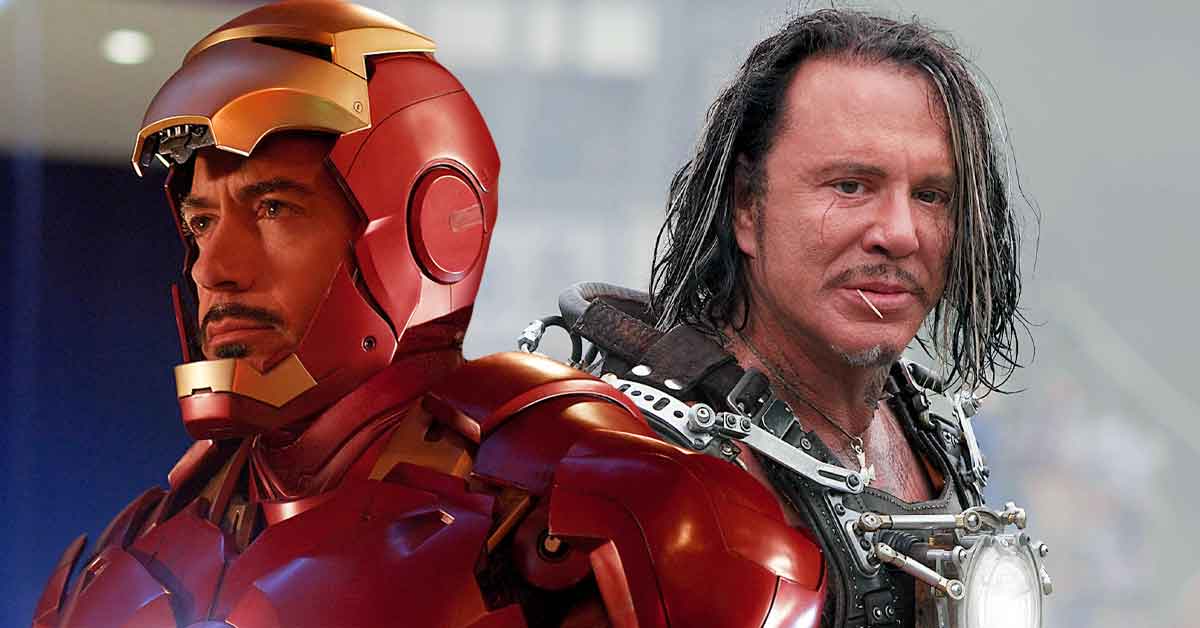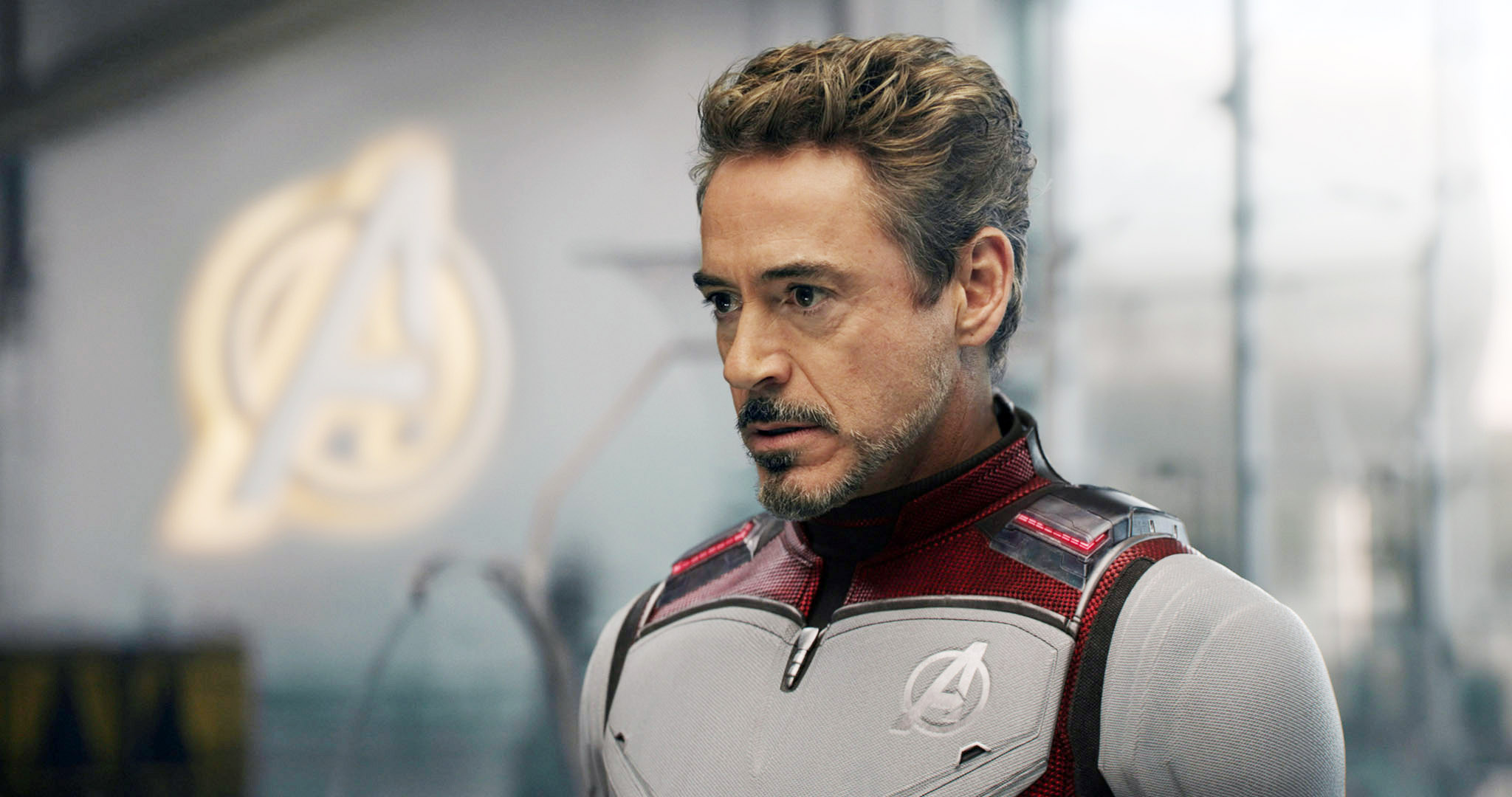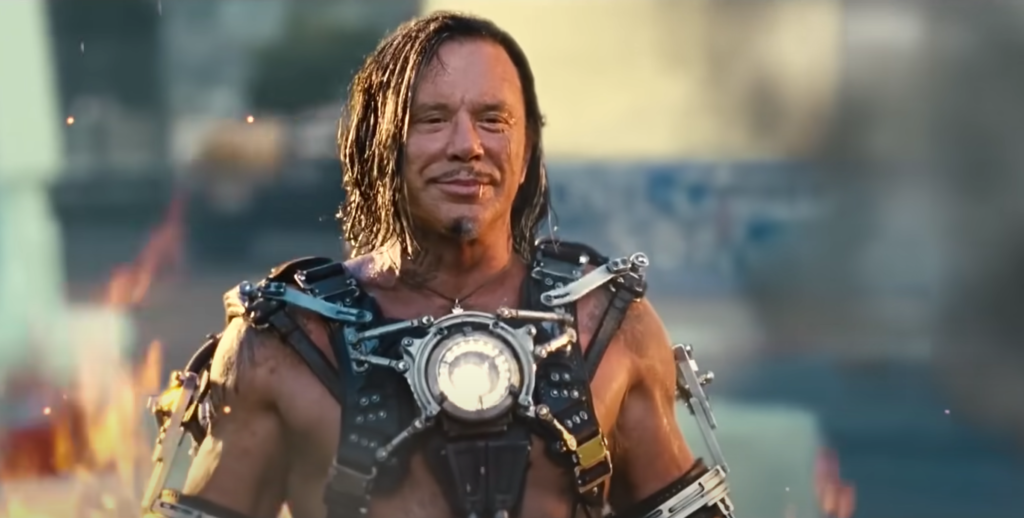In the dazzling spectacle of superhero films, it’s the luminous stars and their characters that capture our hearts. However, not all stories from the set are about glory and triumph; some are tales of conflict and frustration, hidden behind the scenes. Such is the case with Mickey Rourke, whose experience with Marvel Studios during the production of “Iron Man 2” reveals a starkly different narrative, overshadowed by the franchise’s poster boy, Robert Downey Jr.

The Cutting Room Floor: Rourke’s Lost Performance
Mickey Rourke, acclaimed for his method acting and intense character immersion, took on the role of Ivan Vanko, also known as Whiplash, in “Iron Man 2.” This film was pivotal in cementing Downey Jr.’s Tony Stark as a central figure in the Marvel Cinematic Universe (MCU). However, despite Rourke’s efforts to bring depth to his character, he claimed that a significant portion of his performance never made it to the final cut.
“I told whatever company it was to go f**k themselves and kiss my a**.”
This explosive comment stemmed from his frustration over the elimination of nearly 80% of his scenes, which he believed were removed to prevent him from overshadowing Downey Jr.
Rourke’s Battle for a Complex Villain
Unlike the typical villain portrayed in many superhero narratives, Rourke sought to infuse Ivan Vanko with multifaceted traits, aiming to transcend the archetype of a mere vengeful antagonist.

“I wanted to bring some other layers and colors, not just make this Russian a complete murderous revenging bad guy.”
Despite his efforts and collaboration with writer Justin Theroux and director Jon Favreau, Rourke’s aspirations were largely unmet, as most of his nuanced scenes were cut from the film. His dedication to the role extended to spending three months perfecting a Russian accent, signifying his commitment to authenticity and depth.
The Industry’s Harsh Realities
The situation Rourke faced highlights a common issue within the film industry, where artistic visions and actor contributions can be compromised for various reasons, including maintaining the focus on more prominent stars or simplifying plots to appeal to broader audiences. His experience raises questions about creative integrity and the challenges actors face when their visions do not align with those of the studio.
Mickey Rourke’s portrayal of a conflicted, dimensional villain might have offered a richer narrative to “Iron Man 2,” potentially enhancing the film’s depth and emotional resonance. However, the majority of his performance remains unseen, leaving audiences to wonder what might have been if Rourke had been given the freedom to fully bring his version of Ivan Vanko to life.
As we delve deeper into the stories behind our favorite films, it’s crucial to acknowledge the contributions and grievances of artists like Rourke, who strive to bring authenticity and innovation to their roles. Their battles, often fought in the shadows of their more famous co-stars, are integral to understanding the complex dynamics that shape the movies we love.

